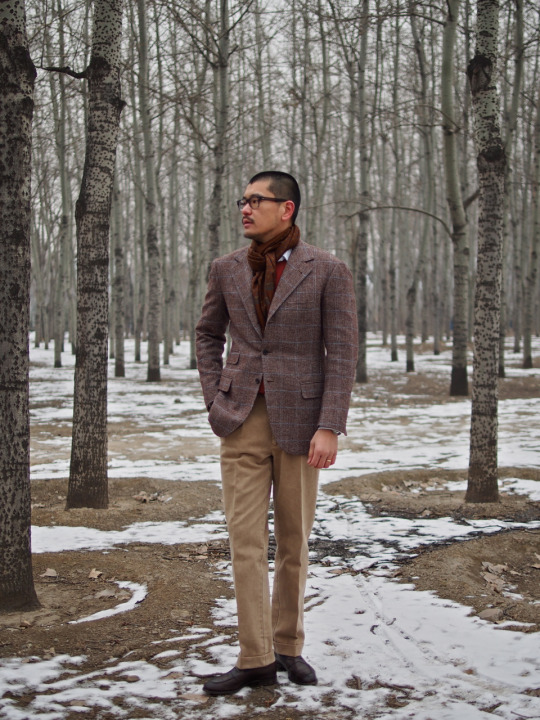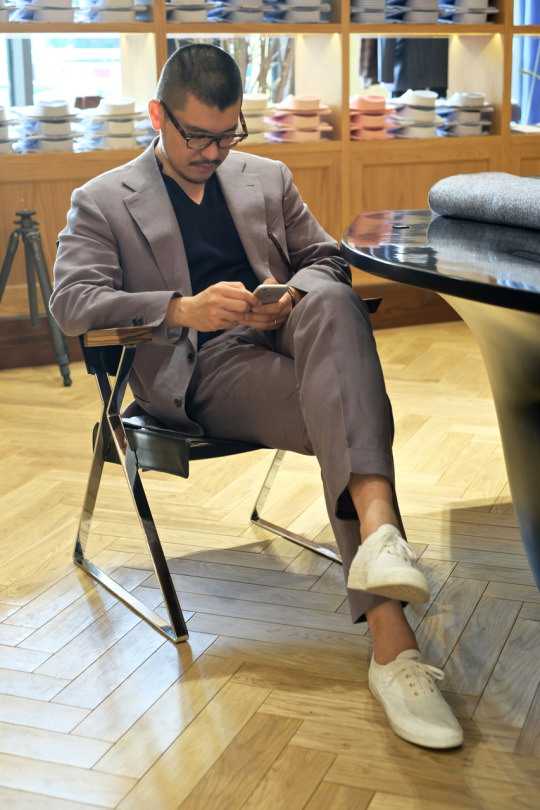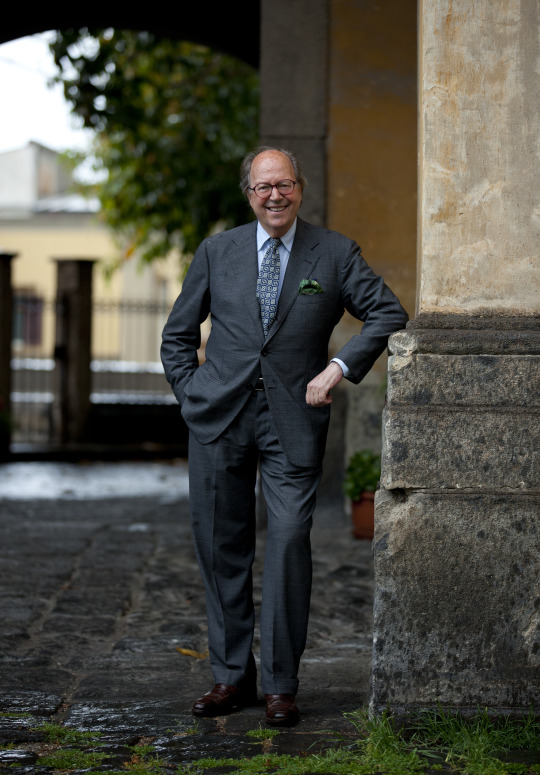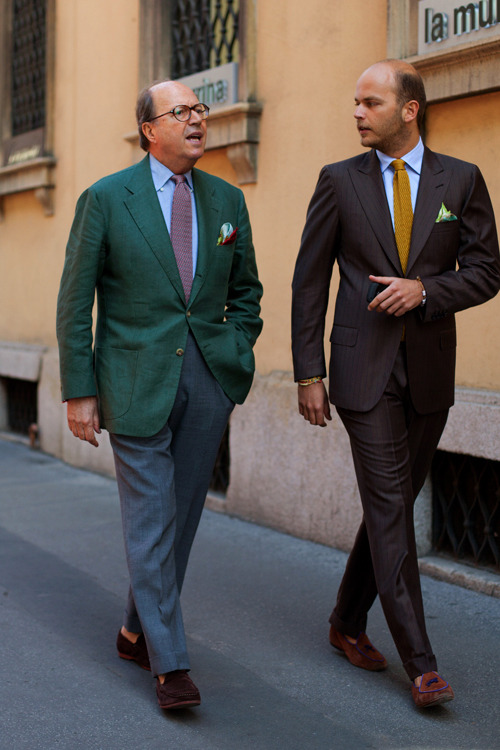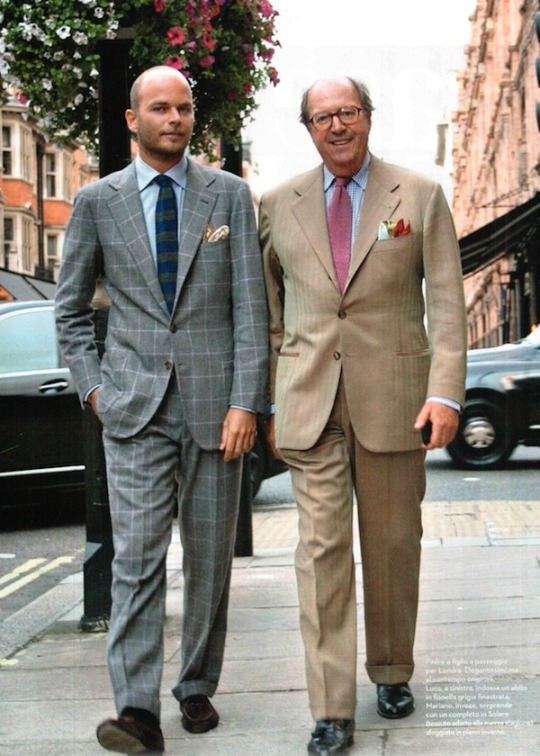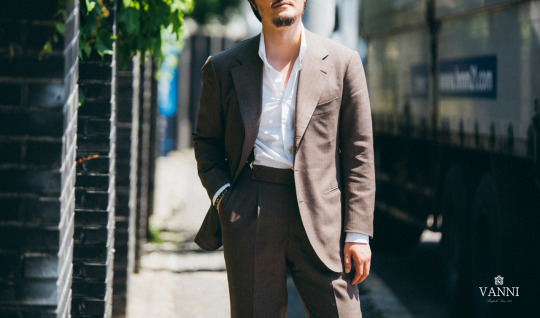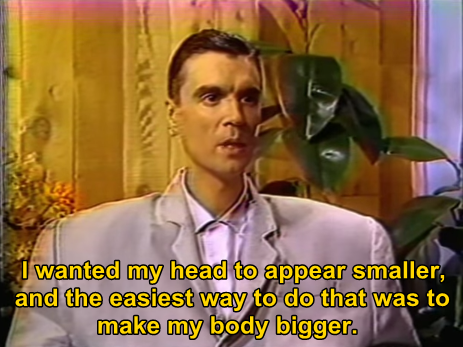
There are a lot of guides these days on how to dress for your body type. Some people argue that shorter men do better in two-button jackets, as they have a longer lapel line (and thus give the illusion of greater height by virtue of extending those vertical lines). Others say that heavy men should avoid double-breasted jackets, as the extra bit of wraparound cloth can add visual weight.
I’ve never bought too much into those arguments, partly because there are so many good counterexamples to every rule. Plus, most of those writers seem to rely more on rhetorical devices than actual evidence.
There are two rule-of-thumbs I follow, however. First, shorter jackets make you look heavier than you are, which means they’re only ever good on stick-thin models whose shoulders are broader than their hips. Second, if you have a less-than-athletic figure, you may benefit from having a little extra room in the shoulders and chest. The second is known as drape; the first an extended shoulder.
Anyone who has been reading about men’s tailoring for a while will probably be familiar with drape. That’s the old Scholte pattern where excess material in the chest “drapes” around the armhole. Extended shoulders are talked about less on menswear sites, but you actually see them everywhere.

The best modern example might be Edward Sexton, who wears an extended shoulder on all his DBs, although softer versions can be found through Rubinacci, Anderson & Sheppard, and Liverano & Liverano. My friend George Wang, founder of the menswear shop BRIO, requests them on all his suits and sport coats (see examples below). Bryan Ferry has also worn the style for decades (see above). Additionally, I like old Armani examples, although those cuts are a little more extreme and dated.
One of the misconceptions of the extended shoulder is that it has to be heavily padded. In fact, the shoulder line of a jacket is made up of both shoulder padding and wadding. Depending on how the shoulder pads have been cut and wadding shaped, you can get a softly sloping shoulder with a slight extension (Liverano does this by default). Plenty of examples as well from Rubinacci.
If some of the examples here don’t look like they’re extended, that’s only because they’ve been done well. Just compare the shoulder lines below to what you might see from Boglioli – particularly their completely unstructured, sweater-like K-line. With no haircloth, padding, or wadding, their shoulders have to be cut closer to the body, otherwise the ends would just collapse. The softer construction here can lend a more casual feel, but the narrower shoulder line doesn’t always flatter.
These days, I request an extended shoulder on all my jackets. By broadening out the shoulder line, you achieve that v-shaped silhouette, making the waist look slimmer by comparison. The only downside: if you get something softly tailored, but also extended, the shoulder ends are more likely to droop over time (as less padding also means less structure). You can see the effect here on Mariano Rubiancci. I don’t mind the look personally, but it’s something to consider.
(photos via Beijing1980, Edward Sexton, Voxsartoria, Vanni Bespoke, Anderson & Sheppard, and The Sartorialist)
